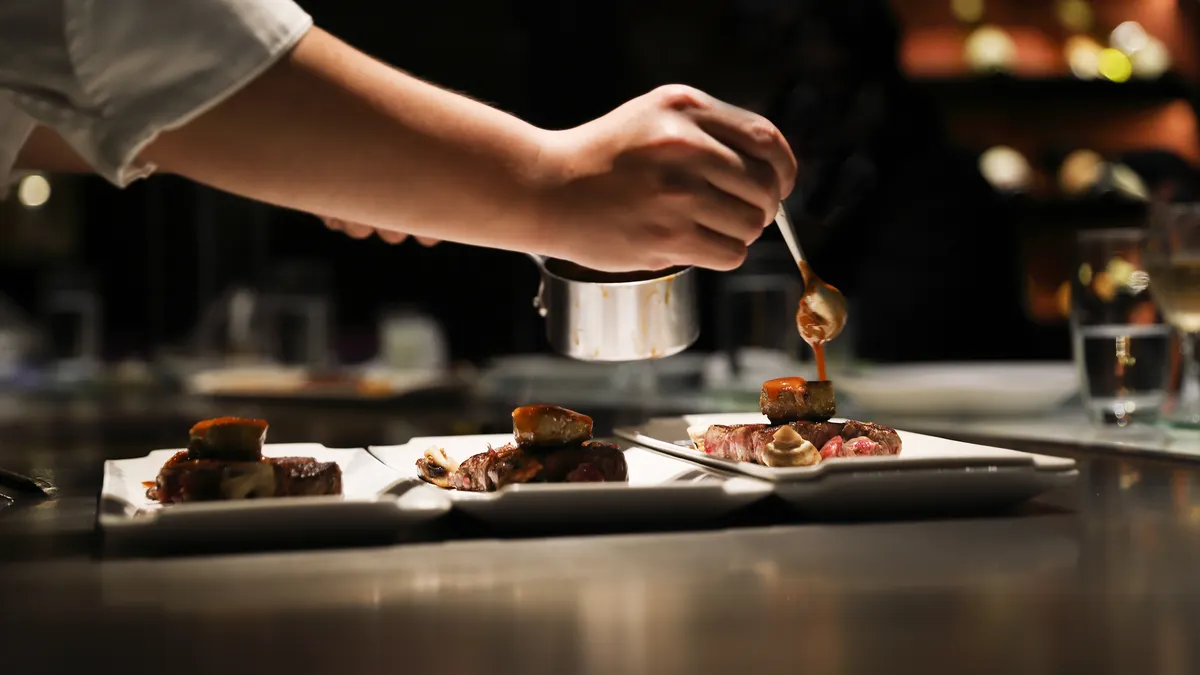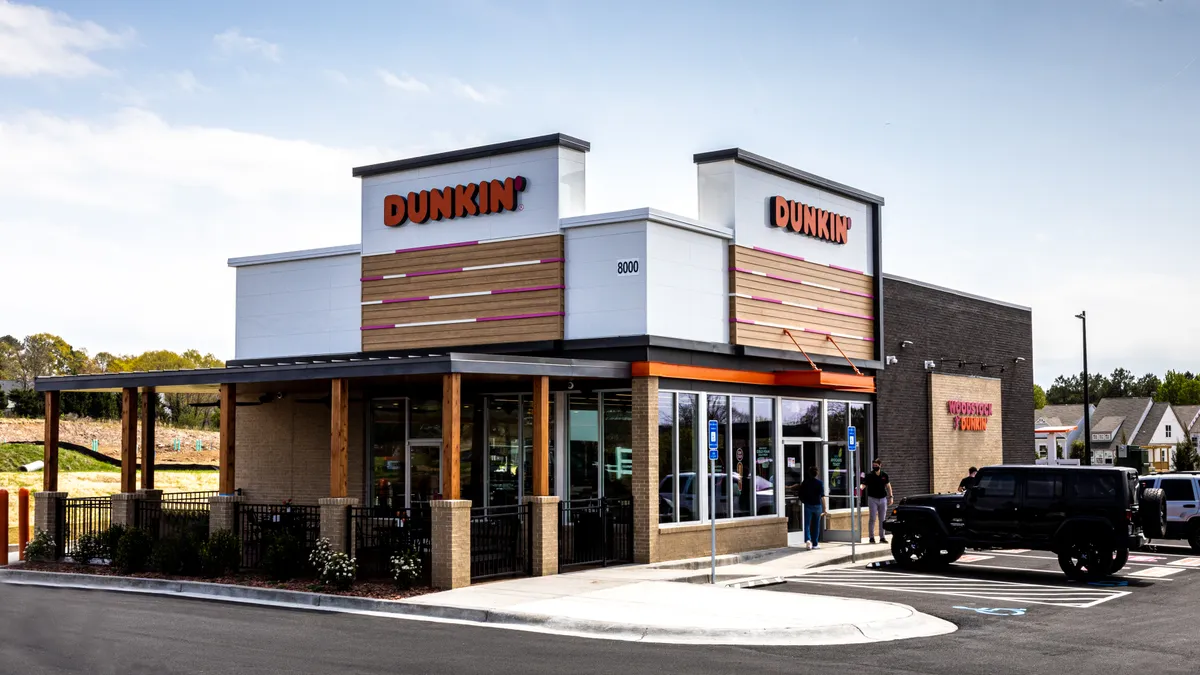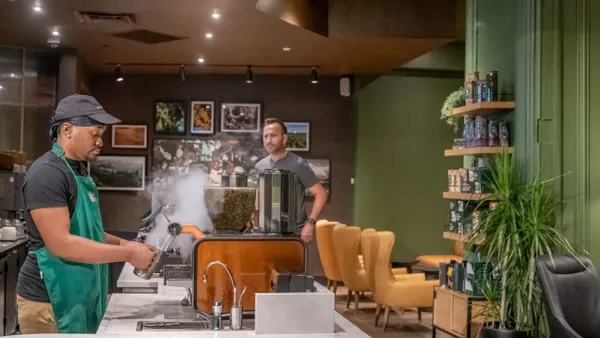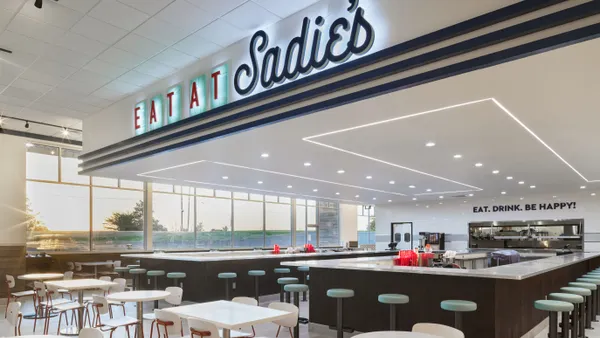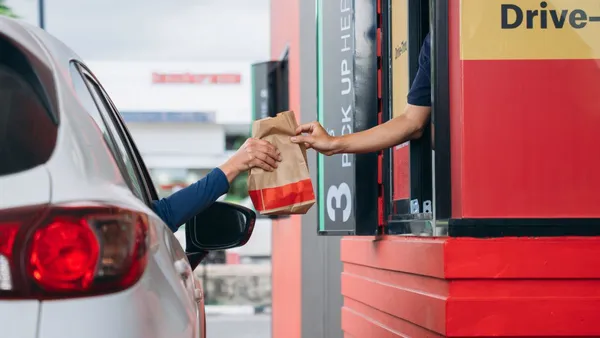Dive Brief:
- Solo dining is on the rise in full-service restaurants, according to a Toast report on reservation trends, with single diner reservations up 22% year over year in Q3.
- Despite this increase, single diners remained a very small proportion of overall full-service diners, accounting for about 1% of booked reservations, according to Toast.
- Both total reservations and cancellations increased by 8% and 7%, respectively. The growth in reservations could be a sign that consumers are opting for more experience-oriented and on-premise dining occasions or special occasions despite overall price sensitivity.
Dive Insight:
The breakfast daypart saw the most significant increase in reservations, with a 19% jump during the 9 a.m. hour, Toast found. Weekdays also saw particularly strong gains, with reservations rising 15% on Tuesdays and 12% on Thursdays.
Despite these increases, dine-in reservations are still primarily concentrated in the dinner daypart and on weekends, Toast said, with 62% of reservations booked for Friday through Sunday.
“The classic dinner rush still reigns supreme: 6 p.m. remains the most popular hour to book by far, capturing nearly 30% of all reservations. It’s followed by 7 p.m. (19%) and 5 p.m. (18%), proving that the traditional dinner window is alive and well,” Toast noted.
This indicates that consumer shifts toward new dayparts for full-service, while meaningful opportunities to capture traffic, are marginal changes relative to the overall demand for full-service dining.
Changes in full-service demand in Q3 were not evenly distributed across the country. Chicago; Milwaukee, Wisconsin; Boston and New York City all saw increases in full-service traffic, per Toast, with Chicago and Milwaukee leading the pack with 3% transaction growth.
Cities in the South, West and Mid-Atlantic performed worse than their upper-Midwest and Northeastern counterparts. Phoenix, New Orleans and Denver all saw 4% drops, and Washington, D.C., afflicted by layoffs in the federal government, saw a 5% drop — the worst among major metros measured by Toast. D.C.’s traffic decline does not include the impact of the 43-day government shutdown, which began at the start of Q4.



